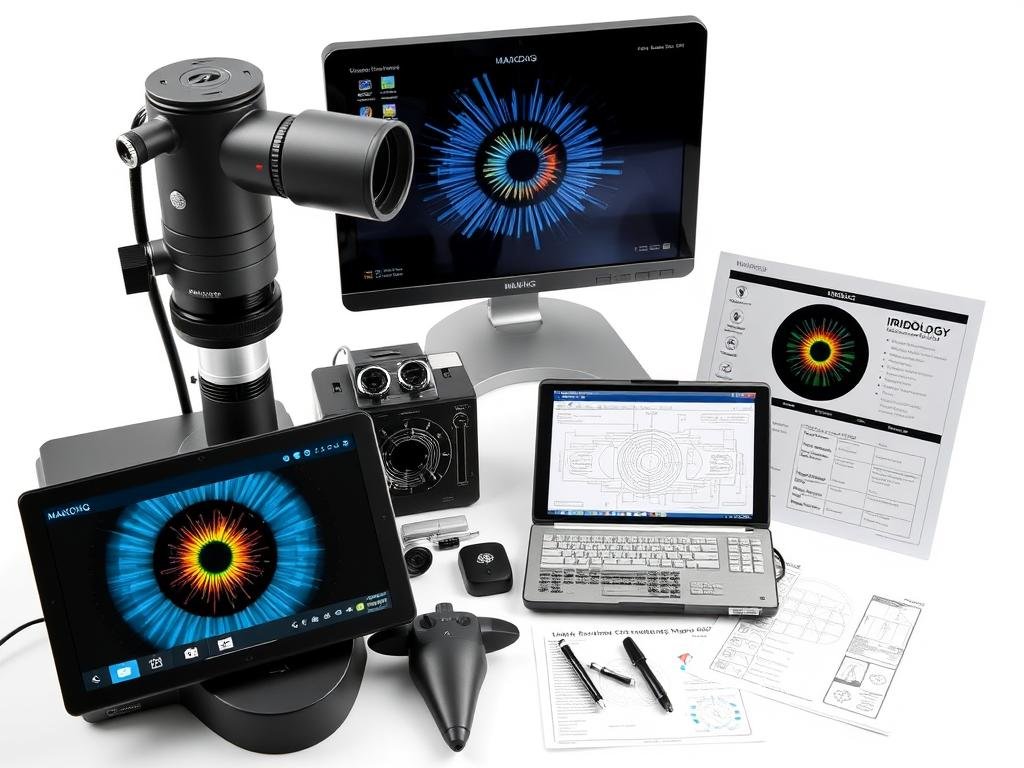Embarking on the journey of understanding Bernard Jensen Iridology opens a fascinating window into holistic health assessment. This ancient practice, pioneered in the United States by Dr. Bernard Jensen, offers insights into the body’s condition through careful examination of the iris. As beginners to this field, you’ll discover how the intricate patterns, colors, and markings in your eyes can reveal valuable information about your overall health and specific bodily systems.This comprehensive guide will walk you through the fundamentals of Bernard Jensen’s approach to iridology, from basic principles to practical applications. Whether you’re a health enthusiast, a holistic practitioner expanding your skills, or simply curious about alternative health assessment methods, this starter’s guide provides the essential knowledge to begin your iridology journey.
Who Was Bernard Jensen and His Contribution to Iridology

Dr. Bernard Jensen, pioneer of Bernard Jensen Iridology in the United States (www.iriscope.org)
Dr. Bernard Jensen (1908-2001) was a chiropractor, nutritionist, and one of the most influential figures in bringing iridology to prominence in the United States. After graduating from the West Coast Chiropractic College and the Pacific College of Naturopathic Physicians, he dedicated over 60 years to researching and developing natural healing methods, with a particular focus on iridology.
In the 1950s, Jensen began teaching his method of iridology, which quickly gained recognition. His approach emphasized the connection between iris signs and nutritional needs, making him unique among iridology practitioners. In 1953, his contributions were acknowledged internationally when he received the Iridology Gold Medal in San Remo, Italy.
Jensen operated health sanitariums in California for over 40 years, where he implemented his holistic approach to health that combined iridology with nutrition, tissue cleansing, and other natural therapies. His most significant contribution was developing what would become the most widely used Bernard Jensen Iridology Chart, created from his extensive clinical experience spanning five decades.
His seminal work, “The Science and Practice of Iridology,” established him as a leading authority in the field, while his more accessible book “علم القزحية مبسط” has introduced countless beginners to the practice. Jensen’s approach was unique in that he viewed iridology not as a diagnostic tool but as a method to identify areas of weakness and nutritional needs in the body.
Understanding the Basics of Bernard Jensen Iridology

Human iris with Bernard Jensen Iridology zones highlighted (www.iriscope.org)
Bernard Jensen Iridology is founded on the principle that the iris, the colored portion of the eye, contains a detailed map of the body. According to Jensen, the iris connects to every organ and tissue via the nervous system, with its fibers reflecting changes in body tissues.
Core Principles of Bernard Jensen Iridology
The practice is based on several fundamental concepts:
- The iris contains reflex connections to all organs and systems
- Changes in body tissues are reflected in corresponding iris fibers
- The iris reveals constitutional strengths and weaknesses
- Iris markings can indicate inflammation, toxin accumulation, and tissue damage
- The left iris corresponds primarily to the left side of the body, and the right iris to the right side (principle of homolaterality)

Historical photo of iridology examination technique (www.iriscope.org)
The Language of the Iris: Signs and Markings
Jensen identified several key iris signs that practitioners should recognize:
- Iris Fibers: The fine lines radiating from the pupil to the outer edge of the iris
- الثغرات: Enclosed darkened areas indicating inherent weaknesses
- Psora: Small, dark spots that may indicate toxin deposits
- الأشعة الشمسية: Spoke-like lines that may indicate toxic conditions
- Lymphatic Rosary: A white ring around the outer edge of the iris
- الحلقات العصبية: الخطوط الدائرية تشير إلى التوتر العصبي
- Scurf Rim: A dark border at the outer edge of the iris
- Color Changes: Variations in iris color indicating chemical changes
- Contraction Rings: Circular arcs suggesting tension in specific areas
- Pigmentations: Colored spots that may indicate drug deposits
ال Bernard Jensen Iridology Chart: Your Map to Body Systems


Comprehensive Bernard Jensen Iridology Chart mapping iris zones to body systems (www.iriscope.org)
ال Bernard Jensen Iridology Chart is the cornerstone of practicing his method of iridology. This detailed map divides the iris into approximately 80-90 zones, each corresponding to different organs and systems in the body. Understanding this chart is essential for anyone beginning their journey into iridology.
How to Read the Bernard Jensen Iridology Chart
The chart is organized like a clock face with the pupil at the center. Key features include:
- The right iris corresponds primarily to the right side of the body
- The left iris corresponds primarily to the left side of the body
- The chart is divided into 12 clock positions for easy reference
- Organs and systems are mapped to specific zones at various distances from the pupil
- The innermost circle (closest to the pupil) represents the stomach and intestines
- The middle zones represent major organs like the heart, liver, and kidneys
- The outer zones represent the skin, lymphatics, and musculoskeletal system
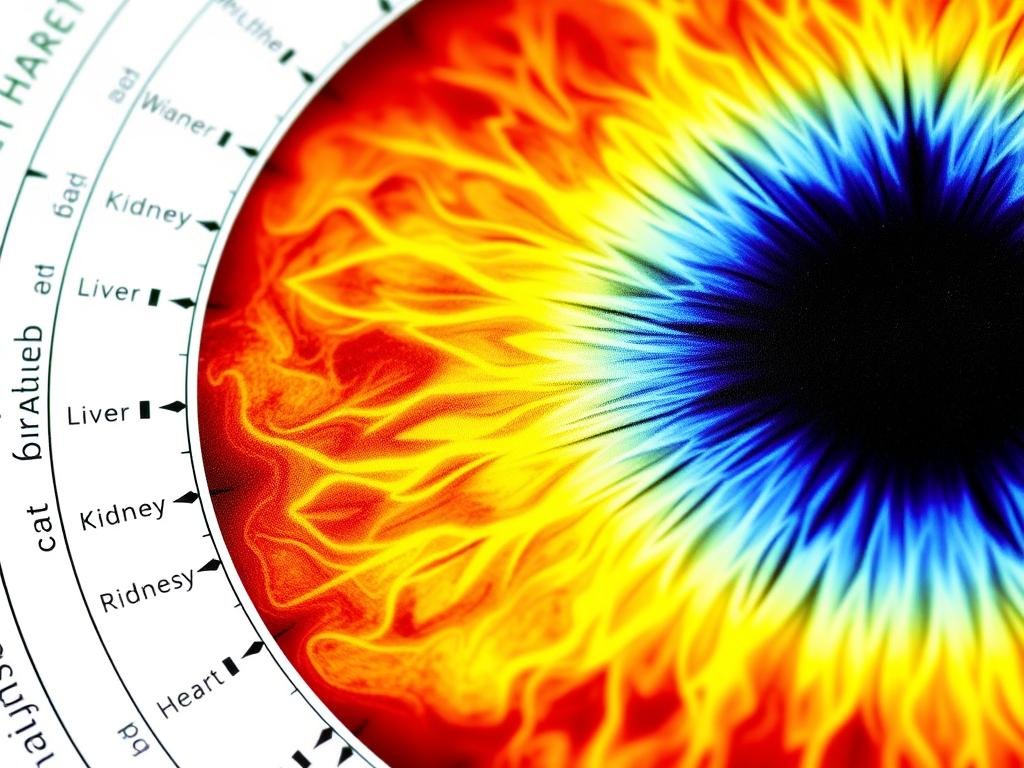
Detailed section of the Bernard Jensen Iridology Chart (www.iriscope.org)
Major Body Systems on the Chart
Iridology Chart: Iridology Right Eye Chart And iridology Chart Left eye
In علم القزحية,Iridology Right Eye Chart And iridology Chart Left eye represent different parts body. Understande how to interpret iridologyes both eyes is essential in diagnose imbalances or dysfunctions in specific organs or systems.
- عين اليسار corresponds to الجانب الأيسر body, which includes organs, tissues, and structures located on left.
- العين اليمنى corresponds to right side body, include organs, tissues, and structures on right side.
فيما يلي مزيد من التفاصيل حول تفاصيل الأعضاء والأنظمة التي تمثلها كل عين. تخدم هذه المخططات دليلاً مفيدًا لتحديد الاهتمامات بناءً على علامات علم القزحية المقابلة.

مخطط علم القزحية العين اليسرى (يمثل الجانب الأيسر من الجسم)
| موقع على القزحية |
منطقة الجسم/الأعضاء يتوافق |
مؤشرات الصحة الرئيسية |
القضايا المحتملة أو الاختلالات |
| الساعة 12 |
الدماغ الأيسر (نفسي) |
الصحة النفسية، والحالة العاطفية |
التوتر، القلق، الاكتئاب، الإرهاق العقلي |
| 1-2 صباحا |
الوجه الأيسر / الرقبة |
صحة الجلد، وتوتر عضلات الرقبة |
الصداع النصفي، آلام الرقبة، اضطرابات المفصل الفكي الصدغي، مشاكل الجيوب الأنفية |
| 2-3 jOclock |
الحلق الأيسر |
وظيفة الجهاز التنفسي والحنجرة |
التهاب الحلق، وبحة في الصوت، والتهابات الجهاز التنفسي |
| 3-4 أونوك |
الجزء العلوي من الظهر الأيسر |
صحة العمود الفقري وعضلات الجزء العلوي من الظهر والكتف |
توتر الجزء العلوي من الظهر، وألم في الكتف، ووضعية سيئة |
| 4-5 صباحا |
المعدة اليسرى |
وظيفة الجهاز الهضمي، وإنتاج الأحماض |
قرحة المعدة، وعسر الهضم، وانخفاض حمض المعدة |
| 5-6 صباحا |
منطقة الحوض اليسرى |
الأعضاء التناسلية، الجهاز البولي |
مشاكل الدورة الشهرية، التهابات المسالك البولية، آلام الحوض |
| 6-7 jOclock |
أسفل الظهر/الساقين اليسرى |
صحة العضلات والعظام، والدورة الدموية في الساق |
عرق النسا، مشاكل الورك، آلام أسفل الظهر، تشنجات الساق |
| 7-8 jOclock |
الكلية اليسرى |
وظيفة الكلى والمسالك البولية |
حصوات الكلى، مشاكل المثانة، احتباس الماء |
| 8-9 |
الرئتين اليسرى |
صحة الجهاز التنفسي، وقدرة الرئة |
الربو، التهاب الشعب الهوائية المزمن، ضيق التنفس |
| 9-10 صباحا |
القلب الأيسر |
نظام القلب والأوعية الدموية، النحلة العاطفية |
أمراض القلب، آلام الصدر، مشاكل الدورة الدموية |
| من 10 إلى 11 |
أعضاء الجهاز الهضمي اليسرى |
صحة الجهاز الهضمي |
الإمساك، الانتفاخ، سوء الهضم، وظائف الكبد |
| 11-12 صباحا |
البنكرياس / الطحال الأيسر |
تنظيم نسبة السكر في الدم، وصحة المناعة |
مرض السكري، نقص السكر في الدم، مشاكل في الجهاز الهضمي، مشاكل المناعة الذاتية |
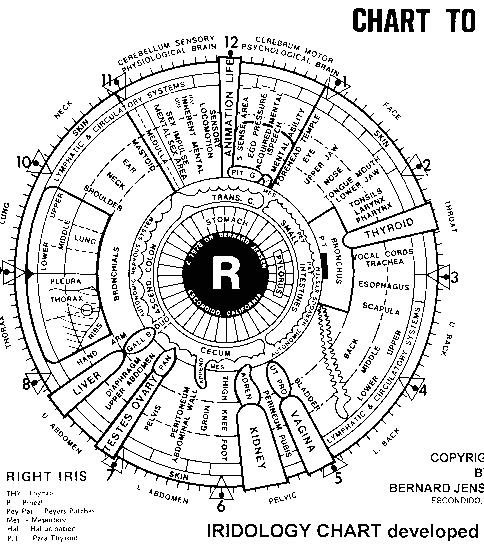
مخطط العين الأيمن في علم القزحية (يمثل الجسم الأيمن)
| موقع على القزحية |
منطقة الجسم/الأعضاء يتوافق |
مؤشرات الصحة الرئيسية |
القضايا المحتملة أو الاختلالات |
| الساعة 12 |
الدماغ الأيمن (النفسي) |
الصحة المعرفية ، وضوح عقلي |
التراجع المعرفي ، التعب العقلي ، الإجهاد |
| 1-2 صباحا |
الوجه/الرقبة اليمنى |
صحة الجلد ، التوتر في العنق الأيمن |
ألم الفك ، وصداع التوتر ، وقضايا الجيوب الأنفية |
| 2-3 jOclock |
الحلق الأيمن |
الرئة اليمنى والغدة الدرقية والصحة الحلق |
التهاب الحلق ، السعال ، بحة في الغدة الدرقية |
| 3-4 أونوك |
اليمين العلوي الظهر |
العمود الفقري العلوي والكتف وصحة الرئة |
التوتر في الكتفين ، وقضايا الجهاز التنفسي ، وآلام الظهر العلوية |
| 4-5 صباحا |
المعدة اليمنى |
مشاكل الجهاز الهضمي ، إنتاج حمض المعدة |
حرقة ، قرحة المعدة ، عسر الهضم |
| 5-6 صباحا |
منطقة الحوض اليمنى |
الأعضاء الإنجابية ، الكلى اليمنى ، الجهاز البولي |
قضايا البروستاتا ، مشاكل الحيض ، التهابات المسالك البولية |
| 6-7 jOclock |
اليمين أسفل الظهر/الساقين |
الدورة الدموية ، صحة العضلات والعظام |
عرق النسا ، تشنجات العضلات ، قضايا تداول الساق |
| 7-8 jOclock |
الكلى اليمنى |
وظيفة الكلى ، الاحتفاظ بالسوائل |
مرض الكلى ، التهابات البول ، الجفاف |
| 8-9 |
الرئتين اليمنى |
صحة الجهاز التنفسي ، وظيفة الرئة |
التهاب الشعب الهوائية ، الربو ، مرض الانسداد الرئوي المزمن |
| 9-10 صباحا |
القلب الصحيح |
صحة القلب والأوعية الدموية ، وظيفة القلب |
ارتفاع ضغط الدم وأمراض القلب والإجهاد العاطفي |
| من 10 إلى 11 |
أعضاء الجهاز الهضمي اليمنى |
الهضم وامتصاص المغذيات |
الإمساك ، القولون العصبي ، مشاكل الكبد ، عسر الهضم |
| 11-12 صباحا |
البنكرياس اليمين/الطحال |
الجهاز المناعي ، تنظيم السكر في الدم |
مرض السكري ، ضعف الجهاز المناعي ، اضطرابات الجهاز الهضمي |


Practical Application of Bernard Jensen Iridology

Modern iridology examination using MAIKONG professional equipment (www.iriscope.org)
Getting Started with Bernard Jensen Iridology
For beginners interested in applying Bernard Jensen’s iridology methods, here’s a step-by-step approach:
- Acquire Basic Equipment: Start with a good quality magnifying glass (5x to 10x) or a specialized iriscope for better visualization
- Study the Chart: Familiarize yourself with the Bernard Jensen Iridology Chart and its zones
- Practice Observation: Begin by examining your own iris in good natural light or with a penlight
- Document Findings: Take clear photographs or make detailed notes of what you observe
- Compare with References: Use Jensen’s books to compare your observations with reference images

Basic iridology equipment for beginners (www.iriscope.org)
Conducting an Iridology Analysis
When performing an iridology analysis following Jensen’s methodology:
- Proper Lighting: Use natural daylight or a good quality light source that doesn’t cause pupil contraction
- Positioning: Have the subject face the light source with eyes wide open
- Systematic Examination: Examine the iris methodically, starting at the pupil and working outward
- Note Taking: Document all observations including color variations, markings, and fiber patterns
- Chart Correlation: Correlate your findings with the corresponding body areas on Jensen’s chart
- Holistic Interpretation: Consider the overall pattern rather than focusing on isolated signs
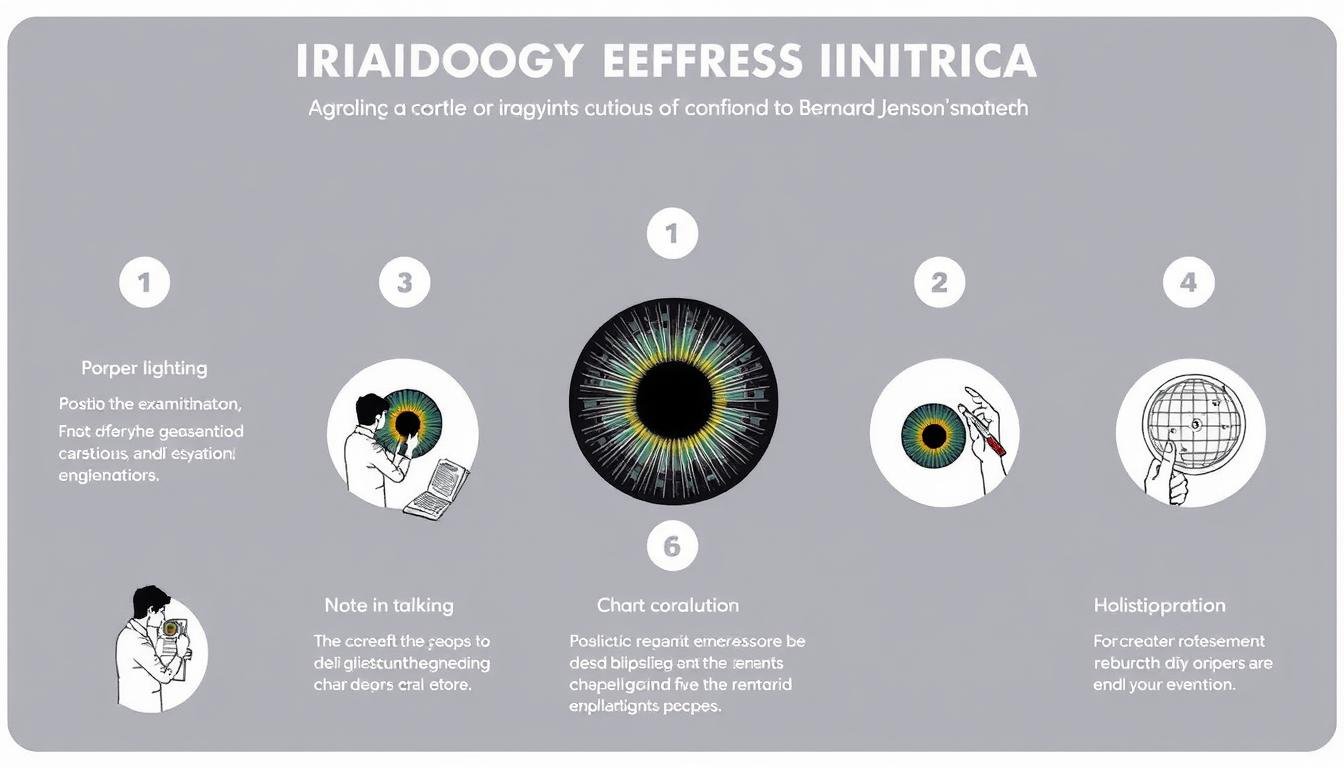
Step-by-step iridology examination process (www.iriscope.org)
Modern Equipment for Bernard Jensen Iridology Practice
MAIKONG: 20+ Years of Excellence in Iridology Equipment
With over two decades of specialized experience, MAIKONG has established itself as a leading manufacturer of professional iridology equipment. Our commitment to quality and innovation has made us trusted by practitioners worldwide.
Explore Our Products
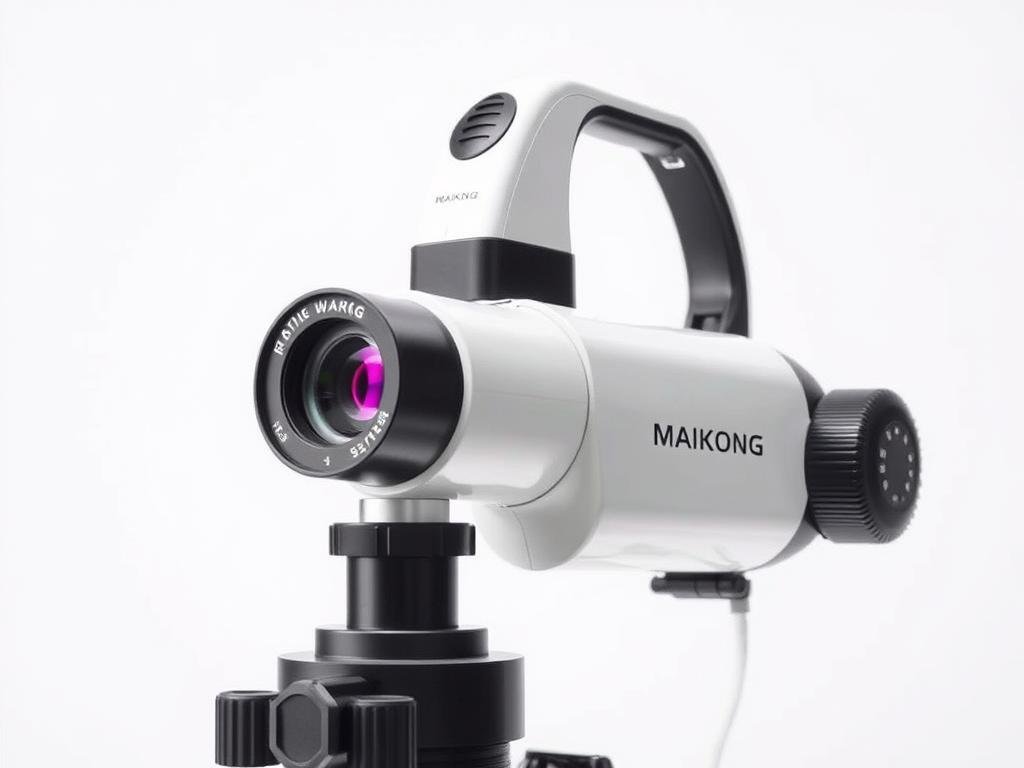
MAIKONG Professional Iriscope (www.iriscope.org)
Professional Iriscope
Our advanced iriscopes provide exceptional clarity and detail for accurate iris analysis. Following Bernard Jensen’s principles, these devices allow practitioners to observe the minute details that make precise iridology possible.
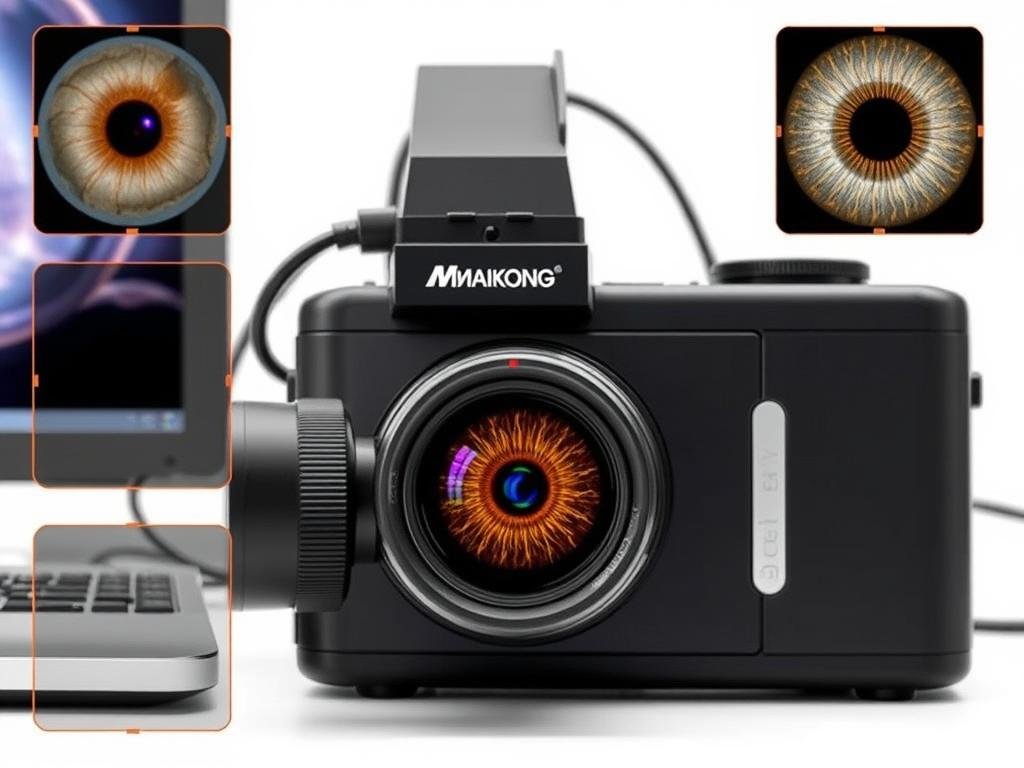
MAIKONG Iridology Camera (www.iriscope.org)
Iridology Cameras
Our specialized iridology cameras capture high-resolution images of the iris, allowing for detailed analysis and documentation. These cameras integrate seamlessly with our software for comprehensive iridology assessments.

MAIKONG Iridology Software (www.iriscope.org)
برامج القزحية
Our specialized software incorporates Bernard Jensen’s iridology principles with modern technology. It allows for digital mapping, analysis, and record-keeping, making iridology practice more efficient and accurate.
Advancing Bernard Jensen Iridology with Technology
While Bernard Jensen conducted iridology with simpler tools, today’s practitioners can benefit from technological advancements that enhance the practice while maintaining his core principles:
- Digital imaging provides consistent, high-quality iris photographs
- Software analysis helps identify subtle patterns and changes
- Electronic records allow for tracking changes over time
- Enhanced magnification reveals details invisible to the naked eye
- Standardized lighting conditions ensure consistent observations
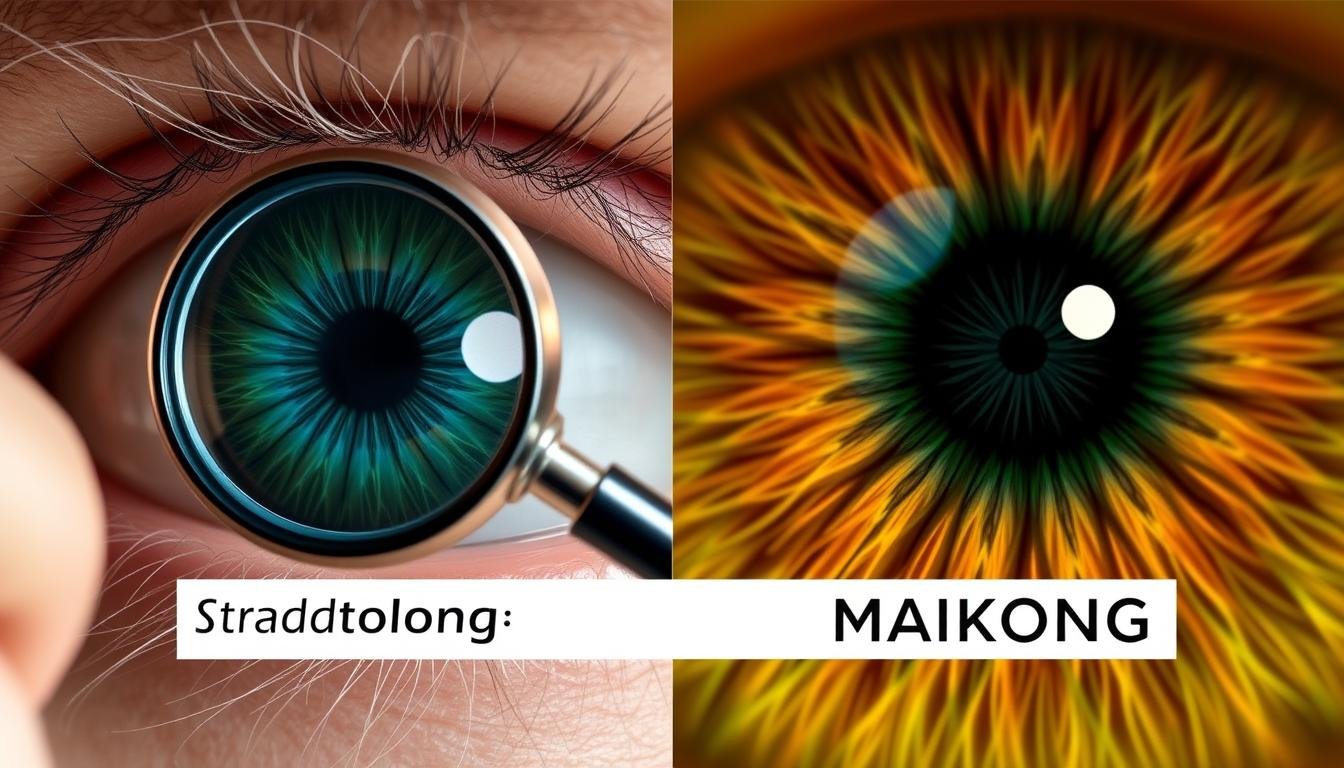
Traditional vs. modern iridology examination methods (www.iriscope.org)
Bernard Jensen Iridology in Practice: Case Studies
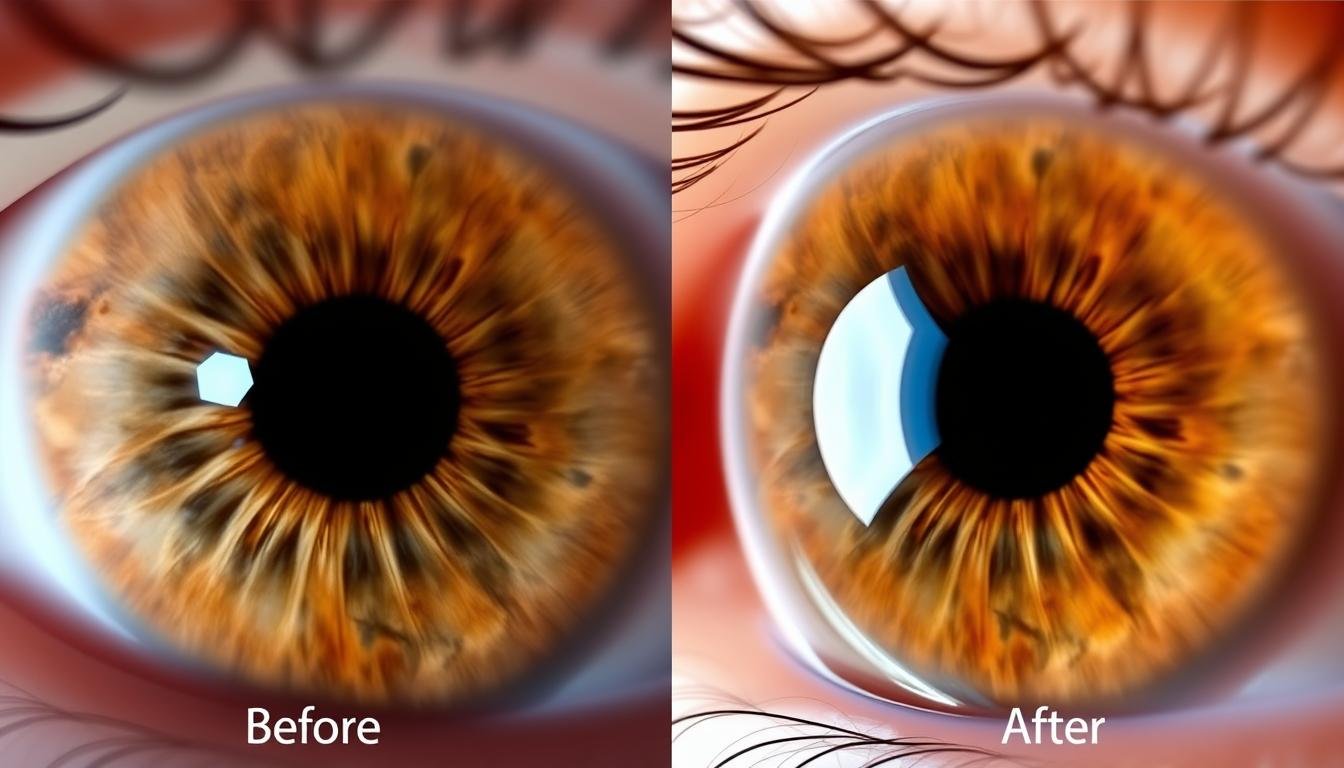
Before and after iris photographs showing changes following health improvements (www.iriscope.org)
Case Study 1: Identifying Digestive Weaknesses
This case demonstrates how Bernard Jensen Iridology identified underlying digestive issues:
- Initial Observation: Dark lacunae in the intestinal area (7-8 o’clock position)
- Corresponding Symptoms: Chronic bloating, irregular bowel movements
- Jensen’s Approach: Recommended dietary changes and specific herbs to support intestinal healing
- Follow-up Observations: Gradual lightening of the intestinal zone markings over 6 months
- Outcome: Significant improvement in digestive comfort and regularity
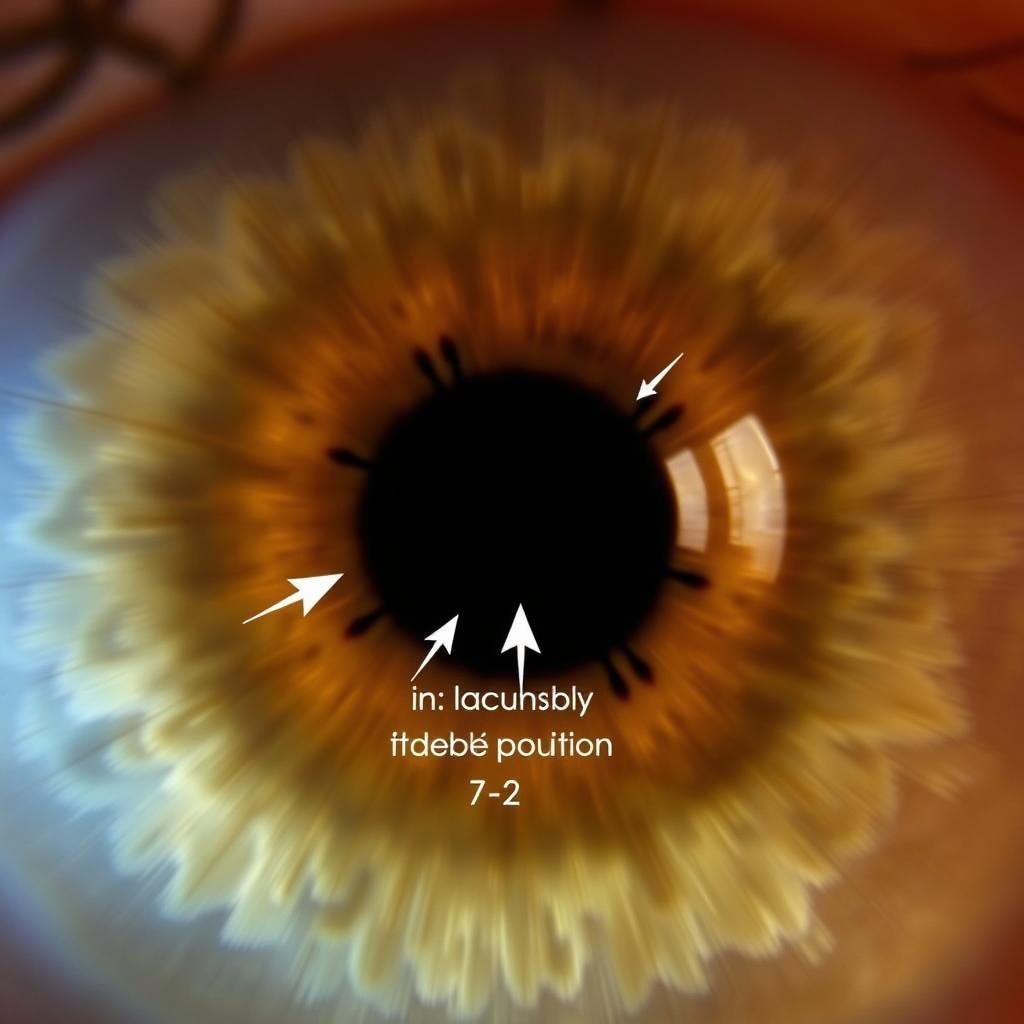
Iris showing digestive zone markings (www.iriscope.org)
Case Study 2: Respiratory System Assessment
This case illustrates how iridology identified respiratory vulnerabilities:
- Initial Observation: White fibers and small lesions in the lung area (4-5 o’clock)
- Corresponding Symptoms: Recurring bronchial infections, seasonal allergies
- Jensen’s Approach: Recommended respiratory strengthening herbs and elimination of environmental irritants
- Follow-up Observations: Reduction in white markings and improved fiber structure
- Outcome: Decreased frequency and severity of respiratory issues

Iris showing respiratory zone markings (www.iriscope.org)
Essential Resources for Learning Bernard Jensen Iridology
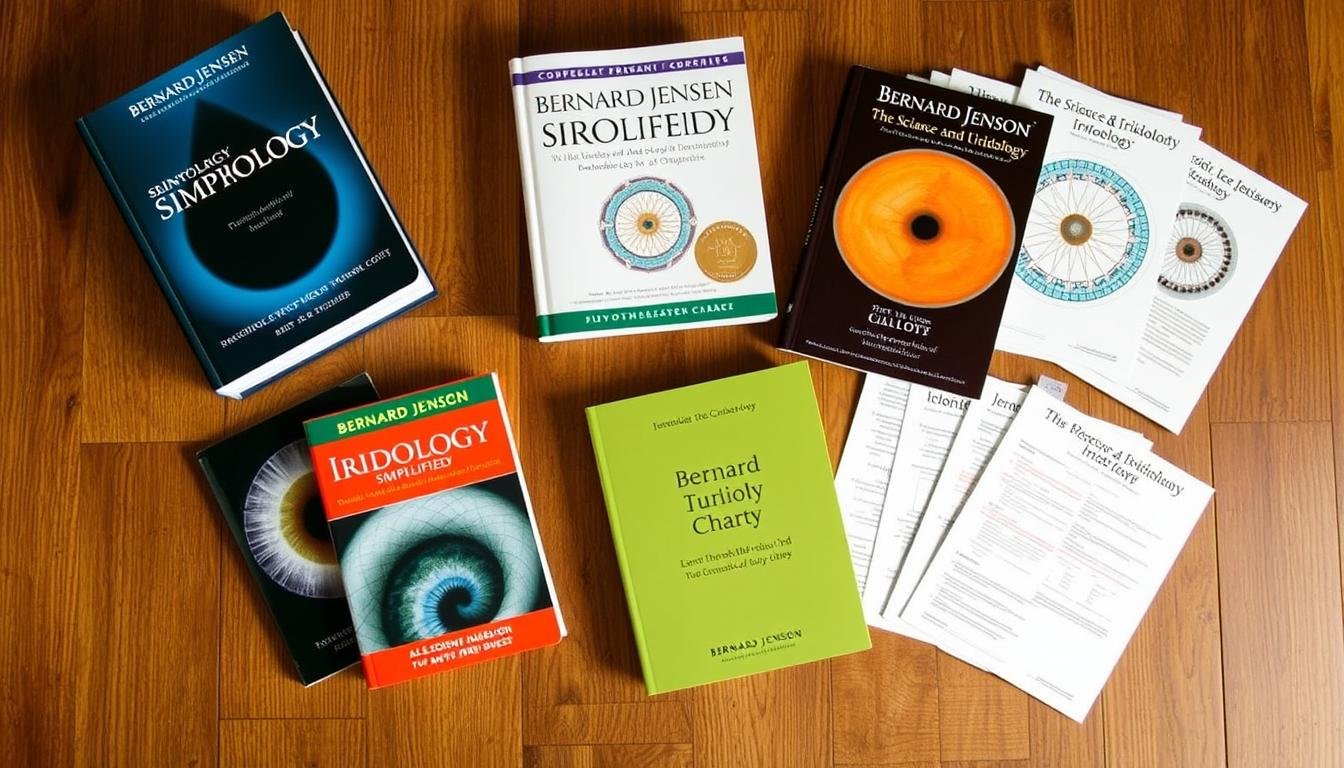
Essential Bernard Jensen Iridology learning resources (www.iriscope.org)
Recommended Books by Bernard Jensen
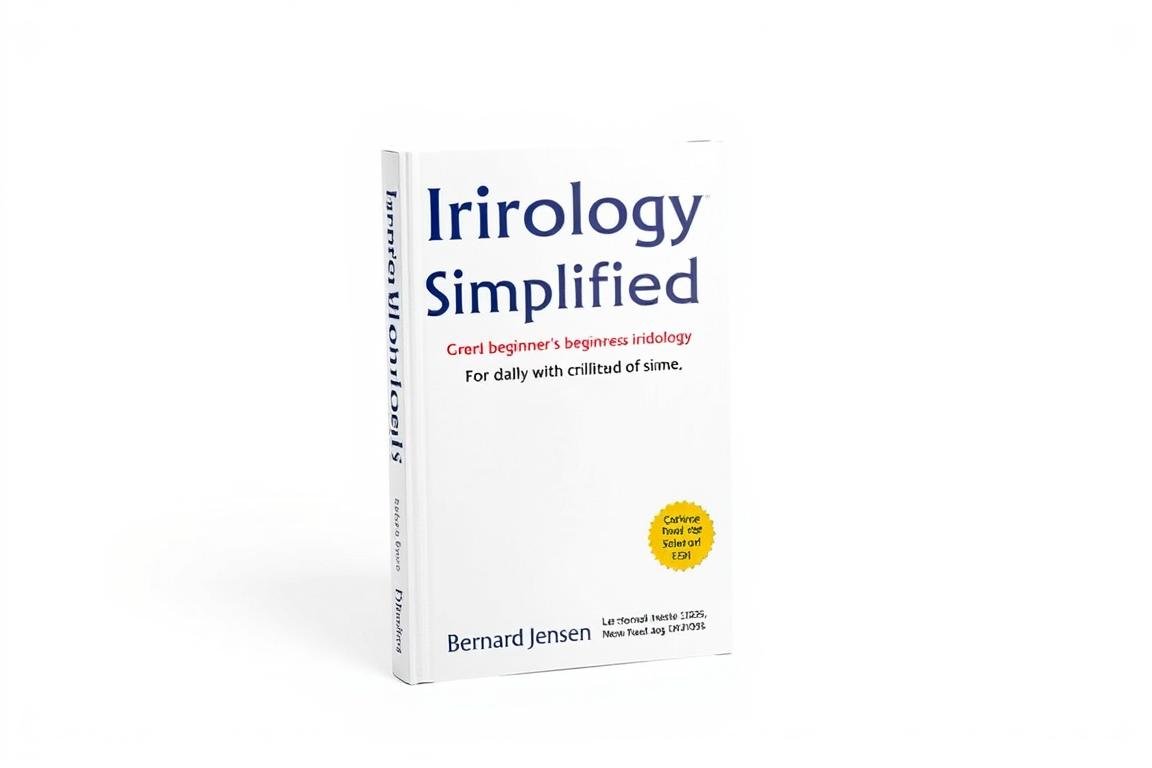
“علم القزحية مبسط” (www.iriscope.org)
علم القزحية مبسط
This concise introduction to iridology is perfect for beginners. Jensen explains the basic principles and provides clear illustrations to help readers understand iris analysis. It’s an excellent starting point for anyone new to the field.
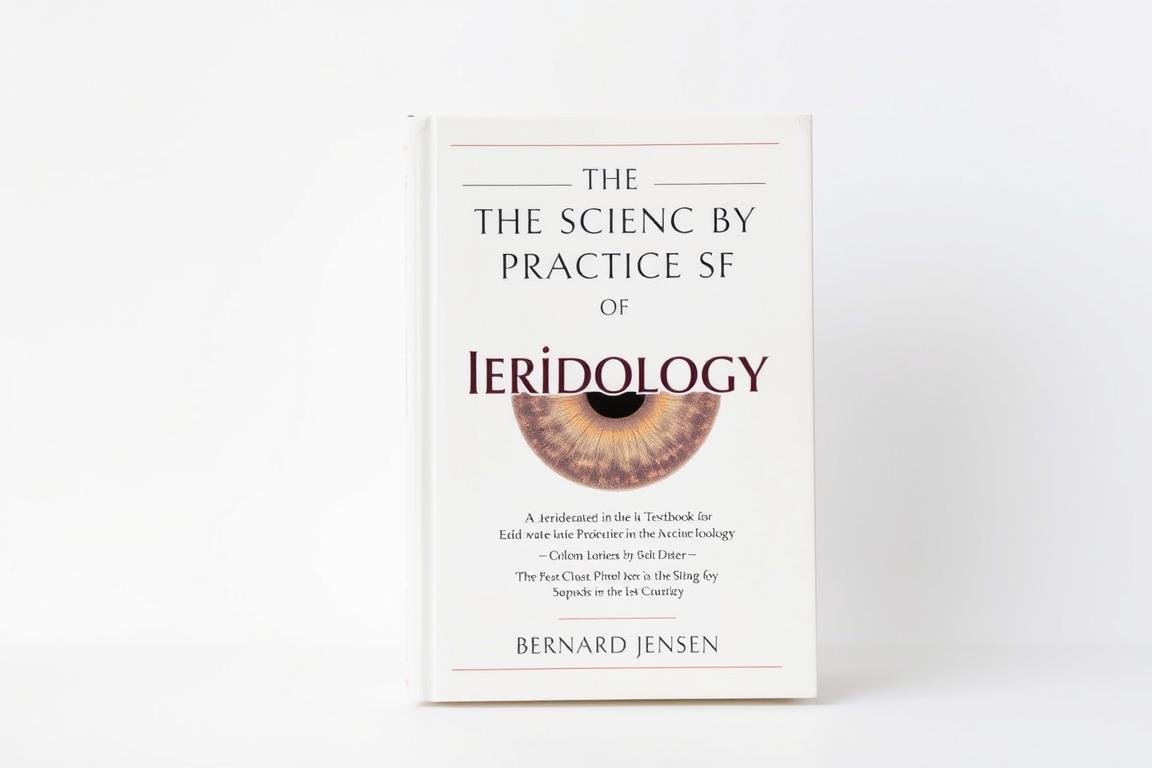
“علم وممارسة علم القزحية” (www.iriscope.org)
علم وممارسة علم القزحية
This comprehensive textbook is Jensen’s magnum opus on iridology. It contains detailed explanations, numerous case studies, and extensive iris photographs. This resource is essential for serious students of Bernard Jensen Iridology.
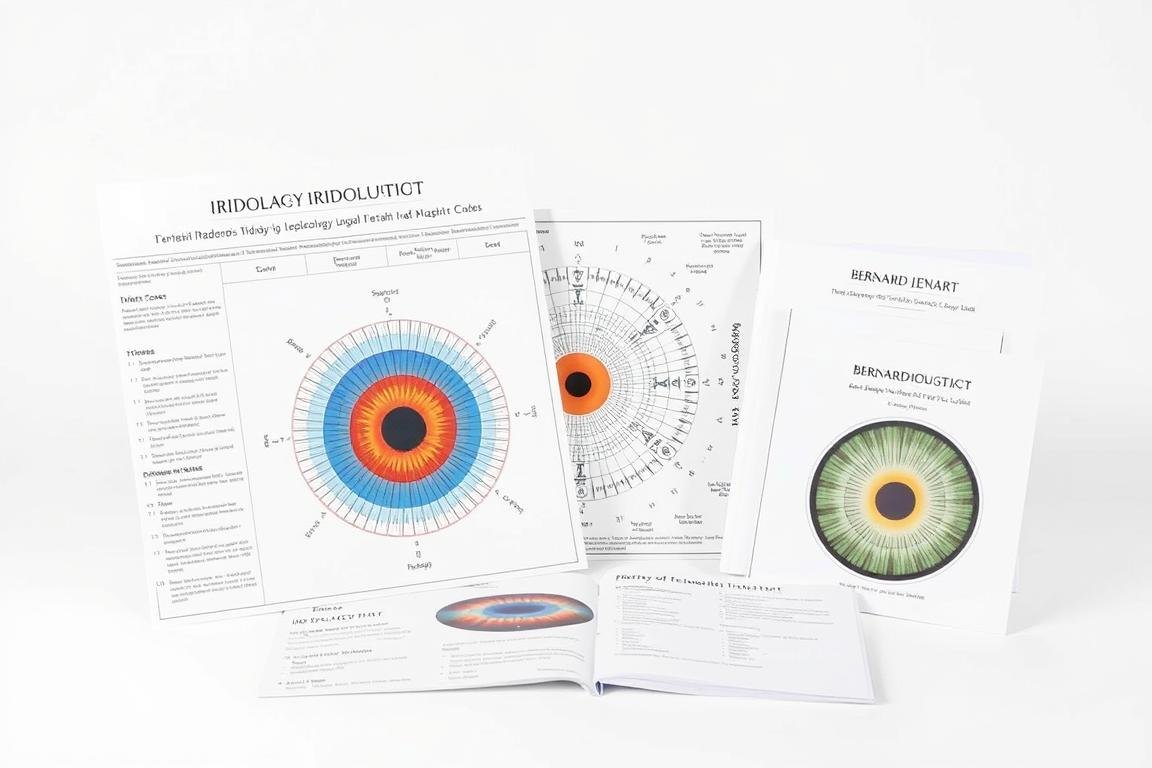
Iridology Charts and Study Materials (www.iriscope.org)
Iridology Charts and Study Materials
Jensen’s detailed iridology charts are essential tools for practice. These charts map the iris zones to corresponding body systems and provide a reference for identifying various iris signs and their meanings.
Modern Learning Resources
To complement Jensen’s original works, consider these modern resources:
- Online Courses: Digital training programs that combine Jensen’s principles with modern applications
- Video Tutorials: Visual demonstrations of iridology techniques and case analyses
- Practitioner Workshops: Hands-on training with experienced iridologists
- Digital References: Software and apps that incorporate Jensen’s iris mapping
- Professional Associations: Organizations that provide continuing education in iridology
Get Professional Guidance
MAIKONG offers comprehensive support for beginners learning Bernard Jensen Iridology. Our team can help you select the right equipment and resources to start your journey.
بريد إلكتروني: لوسي@iriscope.org
أسئلة متكررة حول علم القزحية برنارد جنسن
How accurate is Bernard Jensen Iridology?
Bernard Jensen himself emphasized that iridology is not a diagnostic tool but rather a method to identify areas of weakness and potential health concerns. Its accuracy depends on the practitioner’s skill and experience. Jensen viewed iridology as part of a holistic health assessment, to be used alongside other methods rather than as a standalone diagnostic technique.
How long does it take to learn Bernard Jensen Iridology?
Basic principles can be learned in a few months of dedicated study. However, developing proficiency typically requires 1-2 years of regular practice and study. Jensen himself spent decades refining his approach. Beginners should start with “علم القزحية مبسط” before progressing to more advanced materials.
What equipment do I need to start practicing Bernard Jensen Iridology?
For beginners, you can start with:
- A good quality magnifying glass (5x to 10x)
- A penlight or other focused light source
- Bernard Jensen’s iridology chart
- Basic reference books like “علم القزحية مبسط”
As you advance, you may want to invest in professional equipment like MAIKONG’s iriscope or iridology camera for more detailed analysis.
How does Bernard Jensen Iridology differ from other iridology approaches?
Jensen’s approach is distinguished by:
- Strong emphasis on nutritional connections to iris signs
- Detailed mapping of approximately 80-90 zones in the iris
- Focus on identifying constitutional weaknesses rather than diagnosing specific diseases
- Integration with other natural healing methods, particularly nutrition and bowel cleansing
- Practical clinical applications developed through decades of patient care
Can I practice Bernard Jensen Iridology on myself?
Yes, self-examination is a good way to begin practicing iridology. You’ll need a good mirror and proper lighting. Taking clear photographs of your own irises can also be helpful for more detailed study. However, some areas may be difficult to see on your own, and having a partner or using specialized equipment like MAIKONG’s iridology cameras can provide better results.
Continuing Bernard Jensen’s Iridology Legacy
Bernard Jensen’s contributions to iridology have created a lasting legacy that continues to influence holistic health practitioners worldwide. By learning his methods and applying them with modern tools, you’re participating in a tradition of natural health assessment that spans decades.
Whether you’re a health enthusiast seeking to understand your own body better or a practitioner looking to expand your skills, Bernard Jensen Iridology offers a fascinating window into the body’s inner workings. With MAIKONG’s professional equipment and your dedication to learning, you can unlock the secrets that the iris reveals about health and wellness.
Begin your journey into Bernard Jensen Iridology today, and discover why this approach has endured as one of the most respected methods in the field of natural health assessment.





































